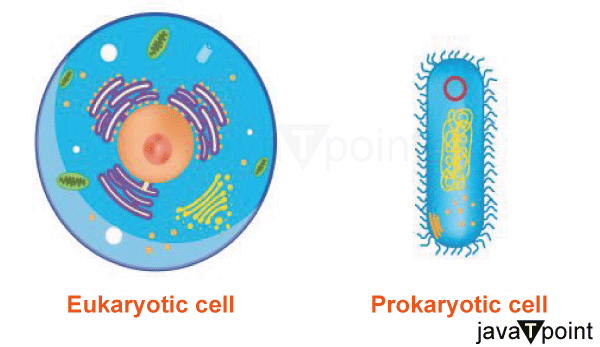Difference between Prokaryotic and Eukaryotic CellWe have learned about different terms in our biology classes like respiratory system, digestive system, prokaryotic cell, and eukaryotic cell. There are many more terms like these. But today, we will discuss about the prokaryotic and eukaryotic cells. Now you must be wondering what do prokaryotic and eukaryotic cells mean and what is the difference between them. Well, it is interesting to note that every organism, be it micro-organism or macro-organism, is made up of cells. Prokaryotic cells are single-celled micro-organisms having a cell membrane. On the other hand, eukaryotic cells are the organisms that have a nucleus. There are several differences between them. 
The term prokaryotic has been derived from the Greek word 'pro' and 'karyon,' meaning 'before nuclei.' Prokaryotic cells are considered to be the ancient cell which dates back to 3.5 billion years. On the other hand, the term eukaryotic has also been derived from the Greek word 'eu' and 'karyon,' meaning 'true nuclei.' Eukaryotic cells are very complex. Now, let us see some fundamental differences between them.
So, these are some of the significant points of contrast among prokaryotic and eukaryotic cells. The most essential difference between them is of a nucleus. Prokaryotic cells do not have a nuclei, while eukaryotic cells have a nuclei, plasma membrane, and a cell wall. The cell wall helps in the protection of the nucleus by preventing certain substances from entering. Well, it is interesting to note that prokaryotic cells contain a structure known as mesosomes. These mesosomes are responsible for assisting cellular respiration. On the other hand, eukaryotic cells contain chloroplasts which carry out the procedure of photosynthesis. These cells are also responsible for the transportation of several materials. Well, talking about the types of eukaryotic and prokaryotic cells, several types of these cells exist. A prokaryotic cell is divided into two categories, i.e., bacteria and archaea. Bacteria and archaea are unicellular, i.e., single-celled organisms. They do not have a cell wall or nuclei. Bacteria are biological cells and have various shapes. Bacteria can be spherical, circular, or linear in shape. It is interesting to note that bacterium was the first cells that came into existence. On the other hand, eukaryotic cells can be categorized into two types, i.e., unicellular eukaryotic cells and multi-cellular eukaryotic cells. Unicellular eukaryotes are defined as the micro-organisms having a nucleus, organized cells, mitochondria, etc. Examples of unicellular eukaryotic cells include protozoa, algae, etc. On the other hand, multi-cellular eukaryotic cells are defined as micro-organisms that contain several types of cells. There are different kinds of tissues formed in the organisms. Examples of multi-cellular eukaryotic cells include plants, animals, fungi, etc. Now, you must be wondering how these cells were discovered and who has discovered them. Well, the term cell was discovered by Robert Hook in the year 1665. He found both eukaryotic and prokaryotic cells. He laid emphasis on the fact that these cells depend on the internal structure and are present in several organisms. All of us know that cell is the functional unit of life. All the actions and reactions take place in the cell structure. Now, are there any similarities among prokaryotic cells and eukaryotic cells? Well, yes, there are similarities between them. Both of these cells have the same characteristics. These features are:
Both eukaryotic and prokaryotic cells have these four similarities. Well, to summarise, prokaryotic cells are unicellular micro-organisms, whereas eukaryotic cells are multi-cellular organisms. The nucleus is present in eukaryotic cells, while there is no nuclei present in prokaryotic cells. The ribosomes are present in both prokaryotic and eukaryotic cells, but they differ in size, i.e., prokaryotic cells have smaller ribosomes, and eukaryotic cells have larger ribosomes present in them. These are the major differences in both prokaryotic and eukaryotic cells. It is important to note that both of these cells are responsible for carrying out the life processes. Thus, prokaryotic and eukaryotic cells are important for the sustenance of several species.
Next TopicDifference between
|
 For Videos Join Our Youtube Channel: Join Now
For Videos Join Our Youtube Channel: Join Now
Feedback
- Send your Feedback to [email protected]
Help Others, Please Share










